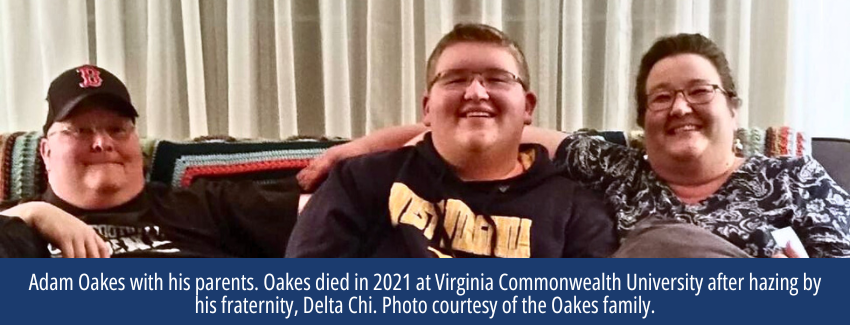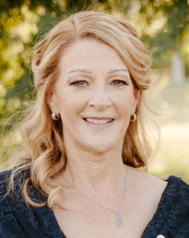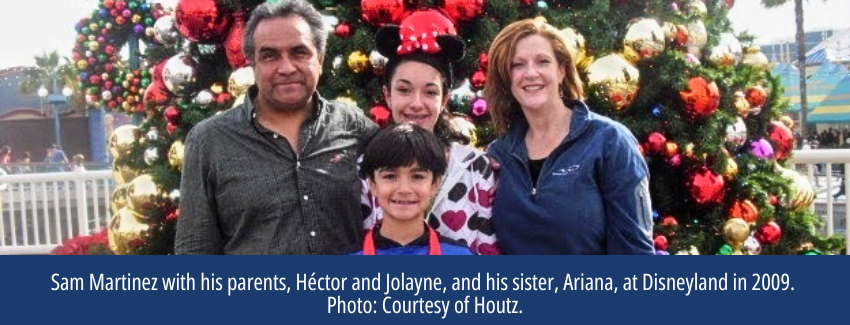134 hazing incidents since 2018: The state of hazing in Virginia
Just 35% of Virginia’s colleges and universities publicly disclose campus hazing incidents as required by state law, according to a HazingInfo investigation
%20(2).png?width=1600&height=250&name=SOH%20Banner%20and%20text%20bugs%20-%20HI%20Blog%202025%20(1600%20x%20250%20px)%20(2).png)
Editor’s note: This is part of our blog series, “The State of Hazing,” investigating the impact of hazing laws in nine states that require public disclosure of hazing incidents.
Virginia’s colleges and universities reported 134 hazing incidents across 17 campuses since 2018, according to a new HazingInfo.org investigation.
But that’s just a partial picture of hazing in Virginia. Only 35% of the state’s higher education institutions are publicly disclosing their hazing incidents despite a 3-year-old state law that requires transparency about hazing.
Hazing prevention experts say the true number of incidents is almost certainly much higher.
“That’s definitely not a number to be proud of,” said Eric Oakes, father of Adam Oakes, who was killed by hazing at Virginia Commonwealth University (VCU) in 2021. “It sounds like under-reporting or under-investigating in meeting their legal requirements.”
32 Virginia campuses don’t provide a hazing report
Virginia’s anti-hazing law is known as Adam’s Law, in honor of Adam Oakes. The law requires Virginia’s 49 colleges and universities to publicly disclose hazing incidents on their websites.
But just 17 colleges and universities make their reports public. HazingInfo checked each Virginia campus website as well as media reports about hazing and found 32 schools with no hazing incident report available.
That includes five campuses that had hazing incidents reported in the media between 2018 and summer 2025 that should have been disclosed: Emory & Henry College; Norfolk State University; Old Dominion University; Virginia Military Institute; and Virginia State University.
James Madison University had the highest overall number of reported hazing incidents in that time with 28, followed by Virginia Tech with 27 and the University of Virginia with 20.
Virginia college hazing data, 2018 to June 2025

The data is part of a national investigation by HazingInfo, which found 946 reported incidents of hazing on 171 campuses between 2018 and 2025 in the nine states with state laws on hazing transparency.
This is the first time the total number of reported US hazing incidents has been tallied — and likely just a fraction of the true number of hazing cases.
The HazingInfo investigation only included misconduct formally determined to be hazing by the institution or from credible media reports. It omitted other kinds of misconduct like alcohol violations or assaults that weren’t officially labeled as hazing.
Our investigation also found that 38 of Virginia’s 49 colleges and universities have hazing policies in place. But just 24 campuses provide a way for students or parents to report hazing through an online reporting form.
At least 20 young people have died from college hazing in Virginia since 1915, according to HazingInfo’s Hazing Deaths Database.
One family’s mission to help end hazing
 Since Adam Oakes’ death, his family has shared Adam’s story with colleges, universities, and high schools across the state to try to prevent another hazing death.
Since Adam Oakes’ death, his family has shared Adam’s story with colleges, universities, and high schools across the state to try to prevent another hazing death.
“A lot of colleges and universities have some form of hazing happening within their institutions,” Eric Oakes said. “It's so deeply embedded in some (group) cultures, and it needs to be quickly identified and eradicated. It's obvious that hazing has gotten so out of control that colleges and universities don't know how to deal with it.”
Adam was a 19-year-old freshman at VCU when he was killed by alcohol poisoning after attending a hazing event at Delta Chi fraternity.
His family worked with lawmakers to pass Adam’s Law in 2022, then returned to the Legislature in 2024 to pass another bill requiring hazing awareness and prevention training in Virginia’s public high schools.
The family also created the Love Like Adam Foundation and developed a hazing prevention curriculum that it gave to Virginia high schools. The foundation provides free anti-hazing training for health and physical education teachers as well as law enforcement in the state.
“Why would you not put up a report?”
 For all their efforts, the Oakes family still sees more work to do.
For all their efforts, the Oakes family still sees more work to do.
“I love Adam’s Law and all it represents, but there are things we can do to tighten it up so the requirements are clear,” said Courtney White, Adam’s cousin and president of the Love Like Adam Foundation.
Campus leaders have interpreted the law differently across the state, she said.
Some believe they don’t have to share a hazing incident report if there haven’t been formal findings of hazing, even just to confirm that no incidents have occurred. Some campuses that don’t have fraternities and sororities believe they are exempt from reporting.
And there aren’t any repercussions for schools that don’t publicly release their information.
“Why would you not want to put up a report?” White asked. Hazing transparency reports “can build relationships with families and students … If safety is your top priority, this action shows families that you are here to be transparent, and you want them to make informed decisions.”
There’s also a big hole in the law: College athletes in varsity and club sports are not required to receive hazing prevention education, an exemption carved out by state lawmakers who feared the requirement would make their universities less competitive in the eyes of potential athletic recruits.
The subjective interpretation of the law “makes me disheartened and sad,” White said. “We put this in place to try to protect kids.”
She also worries that the hazing transparency reports that do exist are too hard to find on college websites.
“I can’t tell you how many sleepless nights — you work your butt off, you do all these things for kids to try to save one of them. All that hard work, and yet the schools are still not doing it,” she said.
Hazing awareness on the rise among VA students
Yet White believes Adam’s Law has also driven positive changes. Virginia students are more aware of hazing and how to report it, she said, and more likely now to call for help if they witness hazing.
“These are slow but mighty changes,” she said.
Too many national student organizations and universities are content to make cosmetic changes to address hazing rather than doing the hard work of changing campus culture, she said.
For example, Delta Chi fraternity told Adam's family that changing the word “pledges” to “associate members” represented an important part of its response to Adam’s death.
Significant, lasting change that can end campus hazing won’t happen until a broad coalition of university leaders, national organizations, students, and families comes together to make it happen, White said.
“For too many people, it’s about dollar signs when it should be about saving lives and making campuses safer for students,” White said.
A law without consequences
.png?width=500&height=500&name=VA%20SOH%20Inset%20Image%20Small%20(1).png) Some campuses choose to do more than Adam’s Law requires.
Some campuses choose to do more than Adam’s Law requires.
VCU’s report includes all violations of the student code of conduct, not just hazing. Hazing education and reporting includes all student organizations, including sport clubs, said Rachael Tully, assistant dean of students, a role VCU created in 2022 after Adam’s death.
Tully believes Virginia’s 134 reported incidents of hazing is a low number that may not reflect more common but less recognized forms of hazing, like derogatory nicknames for new members or requiring them to run errands or do chores for older members.
Many Virginia campuses still aren’t clear about who is responsible for implementing Adam’s Law, she said.
“I think how people view the requirements is, what’s the consequence? Who is even confirming (the report) is up? Three years in, who’s following up?” Tully said. “It feels like an honor system.”
There’s still more to do that could help accelerate Virginia’s efforts to stamp out hazing, Tully said.
She would like to see an amnesty policy allowing student leaders to come clean about hazing that has happened on their watch, acknowledge the need to do better, and get help to change their organization’s culture.
“A lot of them don’t know how to do it alone, and they’re afraid to talk to anyone about it,” said Tully.
Still, Tully sees the issue of hazing being taken more seriously across the state. “We don’t want what happened to Adam to happen again,” she said.
VCU worked with the Love Like Adam Foundation to host the state’s first Hazing Prevention Summit in 2024, with more than 1,000 campus professionals coming together for the first time to talk about their efforts to fight hazing.
Creating opportunities to learn together
The University of Virginia (UVA) hosted the second statewide summit in May, and there are plans to make it an annual event.
The summits showed “there is a need for more opportunities for collaboration across institutions so that we can better address the root causes of hazing together,” said Susie Bruce, director of UVA’s Gordie Center.
The center works to end hazing and substance misuse at UVA and among college and high school students nationwide.
UVA’s anti-hazing initiatives are coordinated across campus, with students deeply involved in decision-making, Bruce said.
After Adam’s Law passed, the Gordie Center created a suite of interactive educational programs to help UVA and other campuses meet the law’s training requirements. The programs are used by 17 other Virginia colleges and universities and have been shown to shift students’ attitudes about hazing, Bruce said.
“We saved somebody’s life today”
Schools nationwide are working to hit a December 23 deadline to publish their campus hazing transparency reports as required by the new Stop Campus Hazing Act, a federal law passed in 2024.
By that date, every US college and university must publicly disclose their hazing incidents on their websites. The Oakes family was among dozens of advocates and families of hazing victims who lobbied for the law.
Eric Oakes believes until students are directly engaged in the fight against hazing, “it’s not going to end.”
“Whenever we speak at a school, I tell Courtney, ‘We saved somebody’s life today.’ They are going to think twice about their actions and their school culture,” he said.
_______________
Learn about hazing on your campus: HazingInfo's Campus Lookup
Read more in our series about the State of Hazing in Georgia, Louisiana, New Jersey, Ohio, Pennsylvania, South Carolina, and Washington.



